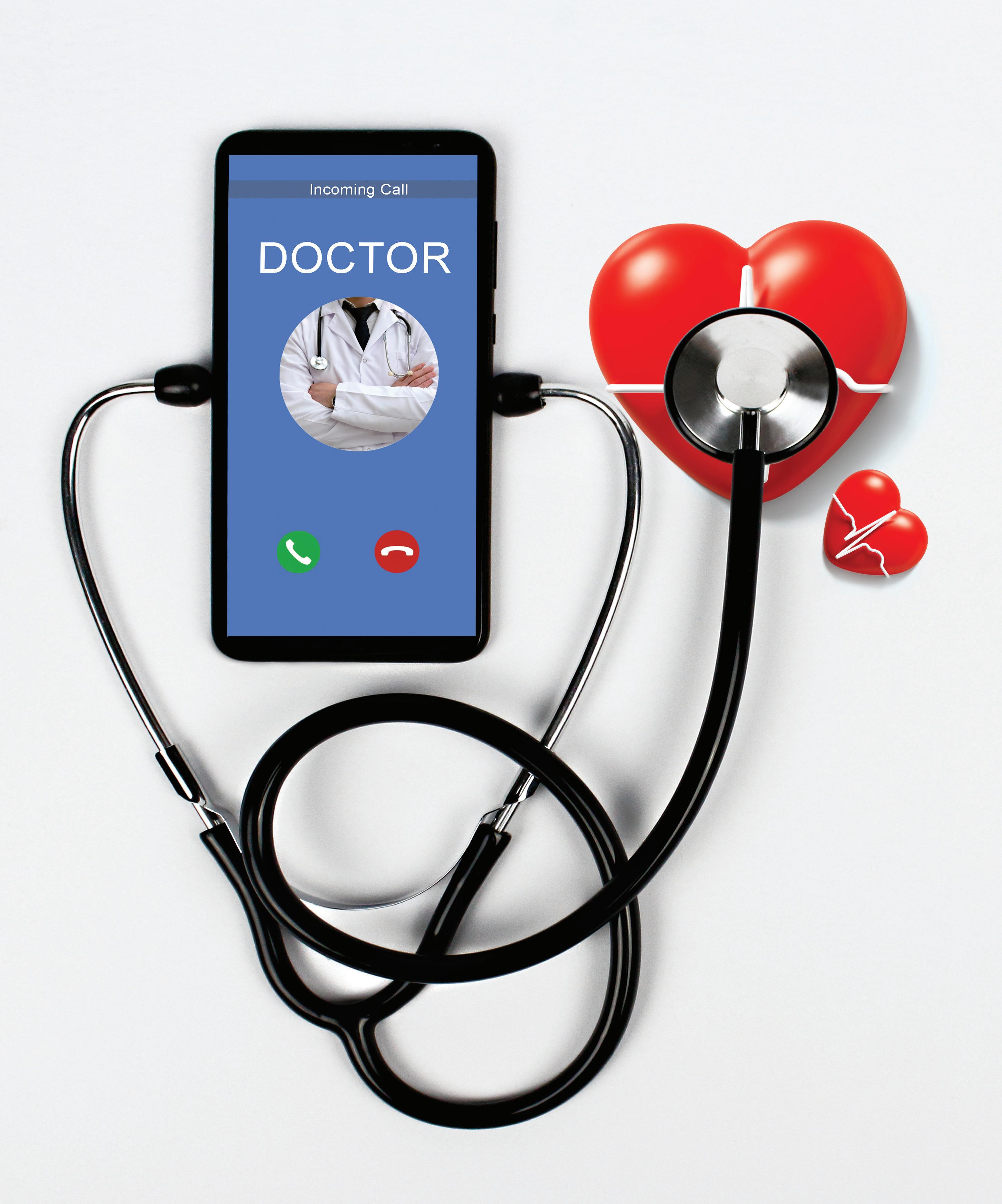
5 minute read
Telemedicine’s Post Pandemic Role
The Post-Pandemic Role of Virtual Care
After 2020’s rapid shift to telemedicine, experts think as much as half of care could be delivered remotely
by Margaret Loftus

A
MY SHIDELER had barely put down roots in Northeast Ohio in fall 2020 when she tested positive for COVID-19. Her support system had yet to be built, and her parents, in Indiana, were recovering from the virus themselves. Beset by fatigue and fever, she worried about being alone, especially since she had a history of asthma. “It was a very isolating feeling.”
But a home monitoring program at Cleveland Clinic, where Shideler is a social worker, made her feel less alone. Each day, she used the MyChart app on her smartphone to log her symptoms, temperature and oxygen level, which were then assessed by care coordinators at the clinic. Within 10 minutes of reporting shortness of breath one morning, she was called by a nurse and connected to a physician, who immediately prescribed a new inhaler. In all, the medical center’s virtual team evaluated her three times for symptoms that might otherwise have sent her to the emergency room. “It was comforting to know I was going to get what I needed right where I was,” she says.
Caring for patients where they are has long been the promise of telemedicine, but it took unexpected and explosive demand in 2020 to make the promise real. Cleveland Clinic went from some 37,000 virtual visits in 2019 to 841,000 in 2021, peaking at 1.2 million in 2020. Virtual care company Teladoc Health facilitated 10.6 million visits in 2020, a 156% increase over 2019; in 2021, that number climbed 38% to 15.8 million visits. While demand has leveled off, experts predict that telemedicine – from doctor and psychotherapist visits to remote monitoring of chronic conditions – is here to stay. “Now that people have been exposed to it, it’s going to be a part of everything that we do,” says Dr. Steven Shook, a neurologist and lead for virtual health at Cleveland Clinic. Consulting firm McKinsey & Company estimated in 2020 that up to $250 billion of the U.S. health care industry has the potential to become virtual, up from a preCOVID revenue of $3 billion annually; providers
AT CLEVELAND estimate that as much as 50% of care could be
CLINIC, delivered remotely.
VIRTUAL VISITS The extent to which the industry grows deSKYROCKETED FROM pends largely on whether Congress makes perABOUT 37,000 IN manent changes to rules that allowed for the 2019 TO 1.2 MILLION expansion of telehealth services, such as more
IN 2020. favorable reimbursement rates and permitting
remote care without geographic restrictions. At press time, sustaining expanded telehealth services had wide bipartisan support and strong backing from the Biden administration, but it’s the eventual fine print – for example, the rates at which various telehealth services are reimbursed compared to those in clinical settings – that will shape the future.
Home as clinic. To that end, a group of providers that includes Intermountain Healthcare, Ascension and Amazon Care formed a coalition in 2021 – called Moving Health Home – to advocate for policy changes that would designate the home as a site of clinical care. Members argue that advances in medical record-sharing, remote monitoring technologies and digital therapeutics have made it possible to deliver even acute care at home in many cases. Salt Lake City-based Intermountain, for example, treats patients at home who have everything from heart failure to certain cancers with a combination of technology and visits from an interdisciplinary caregiving team.
Consumers, for the most part, like the idea. McKinsey found that 40% of consumers will continue using virtual care, compared to 11% who used it pre-COVID.
To be sure, any visits that require hands-on evaluation, such
as orthopedics, are limited in their telehealth potential. But the possibilities in other domains are wide open: Mental health visits through Teladoc Health grew more than 500% in 2020 and more than doubled in 2021.
Another promising area: chronic diseases, which drive 80% of the health care costs in the U.S. Before COVID, Dr. Rachel Caskey, a physician at UI Health in Chicago, only rarely used telehealth. Last year, she managed many of her patients with chronic conditions remotely by, for example, having those with diabetes rely on a glucometer to keep track of their blood sugar and people with hypertension use a blood pressure cuff to take their own measurements. More recently, however, Caskey says she’s seeing fewer patients remotely because UI Health is limiting such visits due to low reimbursement rates. Ideally, though, she finds every other visit could be replaced. “Coming into a clinic every three months can be onerous, so a quick 20-minute call is no problem,” she says. Likewise, at the Medical University of South Carolina, diabetes patients are monitored through cellular-connected glucometers that beam data via a secure cloud to a team of nurses who can adjust insulin.
The coronavirus itself became a case study for remote monitoring. UI Health partnered with the digital health care company physIQ to send COVID patients home fitted with a biosensor patch to collect data on heart and respiratory rates and arrhythmias, as well as movement. The sensor, which is connected to an Android device, sent the data to a team of nurses who checked in with patients daily. Researchers were able to identify preliminary markers that preceded the decline of a patient’s condition. “This kind of technology can and should be given to patients with lots of other chronic conditions,” says Dr. David Chestek, one of the investigators and interim chief medical information officer at UI Health.
Predictive value. Indeed, a study in 2020 by physIQ and four VA hospitals found that such analytics accurately predicted hospitalization for heart failure patients. And because these patients often have other health issues, it also predicted adverse events such as pneumonia and renal failure.
For all its technological promise, telemedicine has the potential to foster a more patient-centered health care system, proponents argue. Consider that much of routine care has been delivered in 15-minute increments once a year, says Dr. James McElligott, medical director for the Center of Telehealth at MUSC. “It’s all about one point in time, but that’s not how health and wellness work.” McElligott thinks telehealth will provide the opportunity to check in more often with patients where they live, with more of a focus on their functioning and wellness. “A big page has turned,” he says. “I don’t think we can go back to where we were.” l
I don’t think we can go back to where we were.





